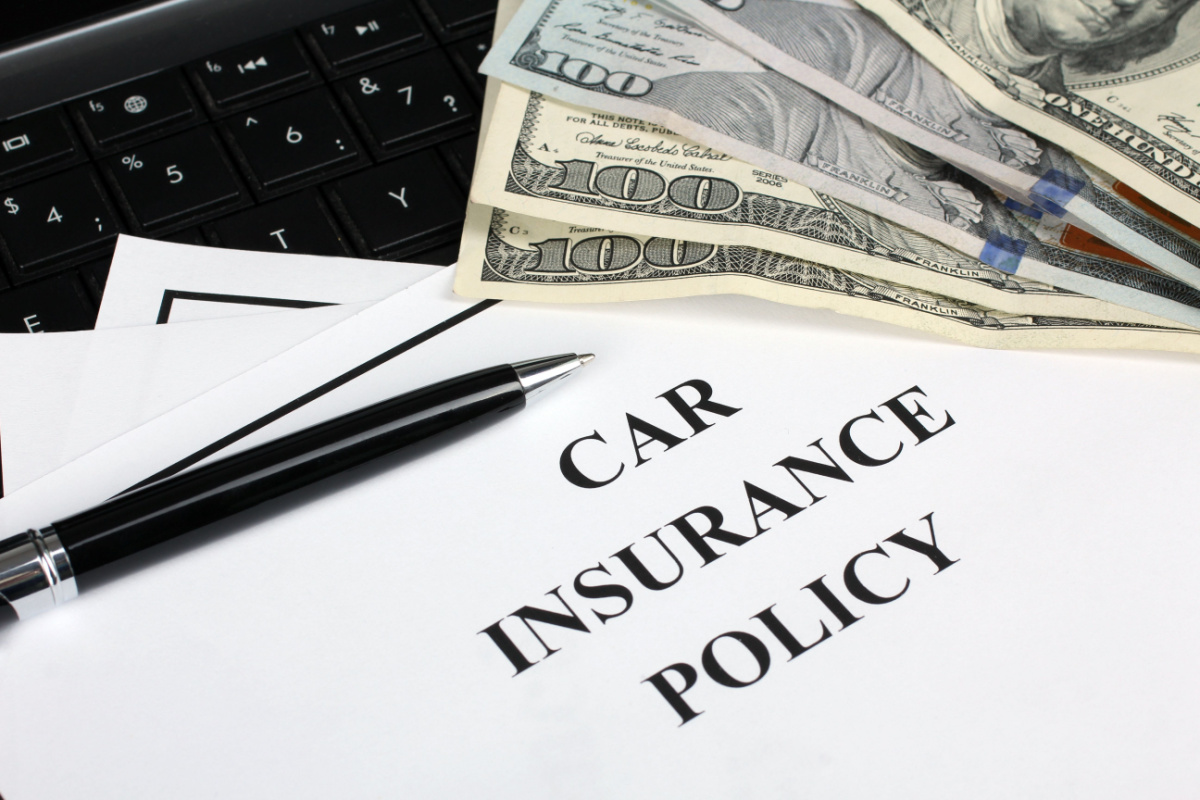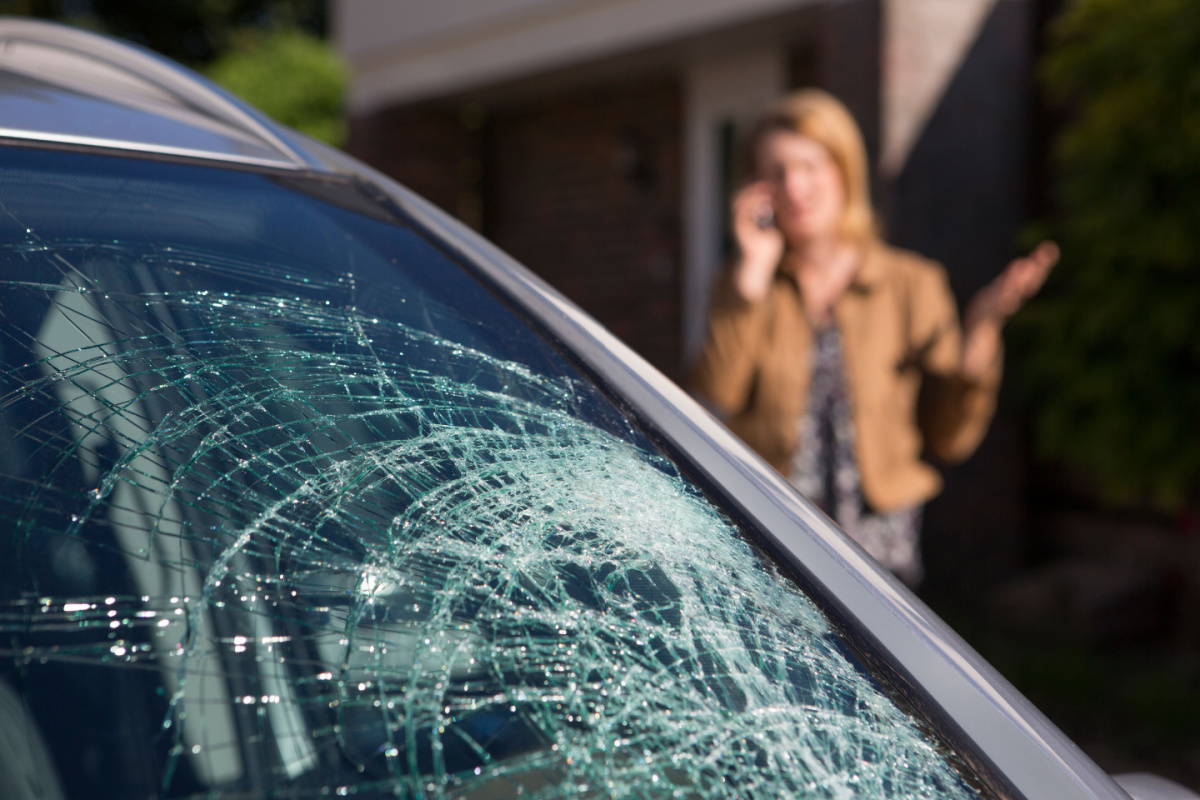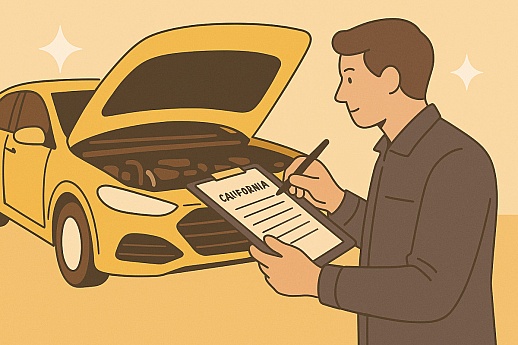What Is a Deductible in Car Insurance?
Navigating car insurance can sometimes feel like trying to understand a foreign language. One term that often causes confusion is the deductible. It might sound like complex insurance jargon at first, but a deductible actually helps define your role in insurance claims. In essence, it's the initial amount you're responsible for before your insurance coverage takes over in the event of a claim.
So, let's demystify this: what exactly is a deductible in car insurance, and how does it work? We'll explore the types of car insurance policies that typically include deductibles, contrasted with those that often don't. Additionally, we'll break down how deductibles work in different scenarios, answer frequently asked questions, and provide insights to help you make informed decisions about your car insurance deductible.
What Is a Car Insurance Deductible?
A car insurance deductible is the amount you pay from your own pocket for car repairs or damage before your insurance coverage kicks in. Think of it as your part in any insurance claim: If you get into an accident or your car is damaged, you will first pay up to the deductible amount, and then your insurance covers the rest of the costs.
How Does a Car Insurance Deductible Work?
Let's see how your car insurance deductible affects what you pay.
For example, if you're involved in an accident causing $5,000 of damage to your vehicle, and you have a $500 deductible, the insurance company would pay $4,500 of the claim while you are responsible for $500.

When selecting car insurance, you're presented with various deductible options by the insurance company, typically ranging from $250 to $2,000, depending on the type of coverage. Within this range, you can choose a deductible that aligns with your budget and desired level of coverage.
If you choose a higher deductible, you pay less for your insurance every month, but you'll pay more if you have an accident. If you choose a lower deductible, your monthly insurance cost is higher, but you'll pay less if you need to make a claim. It's about picking what works best for your budget.
Types of Deductibles
Your deductible amount will vary based on the coverage type you choose and your provider’s policies. Generally, liability coverage, which is mandatory in most states, does not involve a deductible. In contrast, coverages like comprehensive, collision, and personal injury protection typically include deductibles.
Comprehensive Coverage
Comprehensive coverage is designed to safeguard your vehicle against non-collision incidents, including theft, fire, vandalism, and natural disasters. Typically, insurance providers offer a range of deductibles for comprehensive coverage, commonly between $100 and $2,000. This allows drivers to choose a deductible that balances their preferred out-of-pocket costs against their overall insurance rate.
It's also worth highlighting what comprehensive coverage does not cover. This type of insurance generally does not include damage from a collision, mechanical failures, or normal wear and tear of the vehicle. Additionally, personal belongings inside the car that may be stolen or damaged are not covered under comprehensive insurance.
Collision Coverage
Collision coverage pays for the repair or replacement cost of your vehicle if it's damaged in an accident, whether with another vehicle or an object like a tree. For collision coverage in car insurance, deductibles typically range between $250 and $1,000.
The coverage limit of collision insurance is typically based on the actual cash value of your vehicle, meaning it covers repairs or replacement costs up to the car's current market value after the deductible is subtracted.
For example, if your car is valued at $15,000 and you have a collision resulting in a total loss, the insurance will cover up to $15,000. If your car insurance deductible is $500, you would pay this amount, and then your insurance would cover the remaining $14,500 for the vehicle's repair or replacement.
Personal Injury Protection (PIP)
Personal Injury Protection (PIP) covers medical expenses for you, the policyholder, your passengers, and sometimes pedestrians injured in an accident. It applies regardless of who is at fault and can also cover lost wages. PIP is often called "no-fault" coverage because it provides reimbursement without needing to determine who caused the accident.
PIP coverage is mandatory in states like New York, Florida, and Michigan and optional in others like California and Texas. Like the other types of insurance listed above, it comes with varying deductible ranges. The deductible amounts for PIP differ based on state regulations and individual policy choices. Some states legally specify what these car insurance deductibles should be, while in others, policyholders have the option to choose higher deductibles for potentially lower premiums.
Uninsured/Underinsured Motorist Property Damage
This coverage pays for damage to your vehicle caused by drivers who either have no insurance or insufficient insurance to cover the full cost of the damage they cause. This coverage is required in states like Illinois and Maryland and optional in states like Ohio and Georgia. Average costs range from $100 to $1,000.
While bodily injury coverage under UMPD typically lacks a deductible, property damage coverage may include one, often between $200 and $500, to be paid before insurance coverage applies.
How a Deductible Affects the Insurance Premium?
An insurance premium is the payment for your insurance policy. The amount of this premium is influenced by the deductible you choose: opting for a higher deductible generally leads to a lower premium. This is because, with a higher deductible, you take on more of the financial responsibility in case of a claim, which reduces the insurer's risk and potential payout. Conversely, a lower deductible means the insurer bears more risk, resulting in a higher premium for you.
Average Deductible for Car Insurance
The average deductible for car insurance is typically around $500. This means that in the event of car damage or an accident, you're responsible for covering the first $500 of repair costs, and then your insurance will pay for the remaining expenses. Insurance companies usually offer a range of deductible amounts to fit various budgets.

Common deductible options provided by insurers are $100, $250, $500, $1,000, and $2,000, though the exact range can vary depending on the company and type of insurance.
High vs. Low Car Insurance Deductibles
Deductible amounts can range widely. Your choice will put you in one of two categories:
- Higher Deductible: If you pick a higher amount, like $1,000, your monthly premium will be lower. Many drivers opt for higher deductibles if they want to save on their monthly premiums and are okay with paying more at once if there’s an accident.
- Lower Deductible: Choosing a smaller amount, like $100 or $500, makes your monthly premium higher. But, if you have to make a claim, you won’t have to pay as much. It's typically suited for individuals who prefer to avoid or are unable to pay a larger sum upfront during unexpected incidents.
How to Choose Your Car Insurance Deductible Amount?
Your driving record, daily driving conditions, financial situation, and vehicle value can all affect the right deductible amount for you. Weighing all these factors together can help make an informed choice:
- Review Your Driving Record: Look at your past driving history. If you've had few or no accidents and you're generally a safe driver, a higher car insurance deductible could work for you. This means you're less likely to need to file a claim, so you can benefit from lower monthly payments.
- Assess Your Daily Driving Conditions: Think about where and how often you drive. If you're regularly in busy areas with higher accident risks, like city centers or on highways during rush hour, a lower car insurance deductible might be a better choice. It reduces the financial burden if you're more likely to be in a minor scrape or accident.
- Evaluate Your Financial Comfort: An emergency fund or savings can make a higher deductible more manageable. As a benchmark, having a minimum of $1,000 to $2,000 set aside for emergencies can be considered sufficient to opt for a higher deductible. This can ensure you're financially prepared for any unexpected expenses.
- Consider Your Vehicle's Value: The age and value of your vehicle significantly influence your deductible decision. For newer or more expensive cars, generally those less than five years old or valued above $30,000, a lower deductible is often advisable due to higher repair costs. Conversely, for older cars, typically those more than 10 years old or valued below $10,000, a higher deductible might be more cost-effective due to the lower value and repair costs.
- Get Quotes for Different Deductibles: Contact your insurance provider or use online tools to get quotes for different deductible amounts. Compare how much you would save monthly with a higher deductible versus the potential out-of-pocket cost for a lower car insurance deductible.
Expert tip: If you live in an area with a high likelihood of windshield damage (like from rocks), it might be smart to have a low deductible for fixing your windshield. In some places, you can even choose not to have a deductible for this, but your regular insurance cost might go up a little.
What Coverages Do Not Require a Car Insurance Deductible?
Some car insurance coverages do not require a deductible. Liability coverage, mandatory in most states, does not have a deductible. It covers injuries and property damage to others if you're at fault in an accident.

Optional coverages like roadside assistance and rental car reimbursement typically also do not have deductibles. In addition to the coverages mentioned above, deductibles may not be required in the following situations:
- If the Car Accident is the Other Driver's Fault: In this case, the at-fault driver's liability coverage will cover your damage up to the coverage limit, eliminating the need for you to pay a deductible.
- Zero-Deductible Policy or Deductible Waiver: Some policies include a zero-deductible option or a deductible waiver endorsement, meaning you won't have to pay a deductible for claims.
- Glass Repair: For glass repair, many insurers provide the option to waive the deductible, especially if you choose to repair it instead of replacing it.
When Do You Pay the Deductible for Car Insurance?
When you file a claim for car insurance, your deductible is considered as part of the claim settlement process after the claim is approved. Essentially, if your insurance company approves a claim, they will deduct the amount of your deductible from the total claim payout.
For instance, if your approved claim is $5,000 and your deductible is $250, you will effectively receive $4,750 from the insurance company. The deductible is thus accounted for within the claim payout, not paid separately to the insurance provider.
Bottom Line
A deductible in car insurance is the amount you pay from your pocket for car repairs before your insurance pitches in. The amount you choose for your deductible can affect how much you pay for insurance every month.
It's all about finding a balance that works for your wallet and gives you peace of mind while driving. Whether you're dealing with a small scratch or a big accident, knowing how your deductible works helps you handle the costs better.
FAQ
Understanding car insurance deductibles can be tricky, especially for new policyholders or those reevaluating their current plans. Here are some frequently asked questions and answers to cover all your bases:
Do You Have to Pay a Deductible If You’re Not at Fault?
Generally, if you are not at fault in a car accident, you may not have to pay your car insurance deductible. This is because the at-fault party's insurance will be responsible for covering the damages.
However, this can vary depending on your insurance policy and the state you live in. Here are some key points to consider:
- Type of Coverage: If you have collision coverage, you might initially pay the deductible, but it can be reimbursed once the insurance company recovers the costs from the at-fault driver’s insurer.
- No-Fault States: In no-fault states, each party files a claim with their own insurance, regardless of who is at fault. In this case, you might have to pay your deductible.
- Uninsured Motorist Coverage: If the at-fault driver is uninsured or underinsured, and you have uninsured motorist coverage, your car insurance deductible may be lowered or waived.
Do You Have to Pay a Deductible If You Hit Another Car?
If you're at fault in an accident where you hit another car, you will typically pay a deductible for your vehicle's repairs under your collision coverage. This coverage handles the repair costs of your vehicle. The other vehicle's damages are covered under your liability coverage, which usually does not require a deductible.
What Happens If You Can’t Pay Your Car Insurance Deductible?
If you can't pay your car insurance deductible after an accident or a claim, your insurance company generally won't cover the repair costs until your portion of the deductible is paid.
What if the Cost of My Repairs is Less than My Insurance Deductible?
If your car's repair costs are less than your insurance deductible, you'll need to pay all the repair costs yourself. Insurance only covers damages exceeding your deductible. For example, with a $500 deductible, if repairs are $400, you pay the full amount without an insurance contribution.
Sources
- Allstate. “What is collision insurance?” Accessed Dec. 14, 2023.
- Progressive. “Personal injury protection deductible.” Accessed Dec. 14, 2023.
- Progressive. "Uninsured Motorist Deductibles." Accessed Dec. 14, 2023.
- CarInsurance.com. "Uninsured Motorist Property Damage Coverage." Accessed Dec. 14, 2023.



